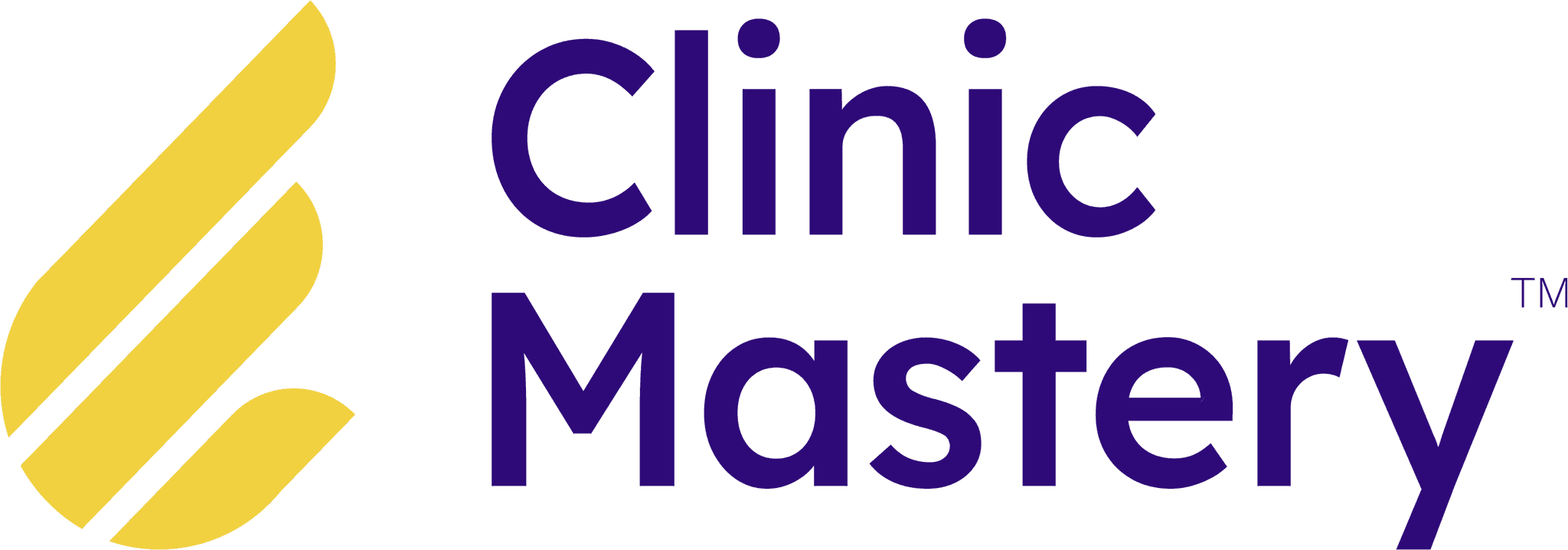Personal Mastery
•
5 min read
•
Dec 2, 2018
Time Blocking: Make An Appointment With Yourself
You might have felt that you don’t have enough time to get things done even if you are time blocking some of your tasks. For most clinic owners, a long list of clients and patients might fill their schedule. You don’t see them and deal with them all at once in a single day, you have appointments, a diary. You have a schedule of appointments throughout the week, so you can tell each person with their respective problem or challenge to come in at that specific time.
Yet, when it comes to working on your business where there might be problems as much as your appointment with your clients. Do you have an appointment schedule with yourself?
2 Kinds of Clinic Owners
The ones who don’t consult at all and they’ve got the entire week to work on their business, yet they don’t do much at all.
The ones who only got few hours but they’re very structured, very outcome-driven, and they make things done in their businesses.
Whether you are consulting or not at all, it’s not the point here. Actually, it’s about getting the most out of your time. It’s about unlocking your potential to maximize productivity in every bit of time you have.
Maximizing Your Capacity

1. How utilized are you?
The very first step to look at your current clinical diary if you’re still consulting and see how utilized you are. Sometimes, people are like, I work sixty hours a wee, “and then we find out they’re only consulting for forty hours. There’s an extra twenty hours of miscellaneous time that you could be working on your business.
2. Create Structure
So, how can you actually create a structure – a system? First is to break down your workloads and identify your priorities. Each task has it’s own value and difficulty. Check out this article on how to categorize your task using the Eisenhower Box.
Secondly, dedicate a specific block of time for each task. Do the most difficult task on your most productive hours and do the task that does not require much of critical thinking on your non-productive hours. Also, schedule a time for weekly or monthly planning, and daily plan review. Then avoid distractions – turn off notifications.
“One hour of inspired time is greater than six hours of uninspired time.” -Andrew Roberts
Lastly, but nevertheless not important, is dealing with planning fallacy. Planning fallacy refers to one’s optimism bias underestimating the time needed for a task despite the knowledge of the past that it actually took longer than planned. To deal with this, allocate an empty block of time for flexibility.
Conclusion
Remember, as always, to action a fraction. Get things done and don’t lose sight of what is truly important. Implement time blocking, audit your diary. See what hours do exist and better structure those hours. Make an appointment with yourself and structure it like you do for your patients.
Grow your business with us by listen to our Podcast Episodes at Stitcher and iTunes.
Leave us reviews and comment.
You might have felt that you don’t have enough time to get things done even if you are time blocking some of your tasks. For most clinic owners, a long list of clients and patients might fill their schedule. You don’t see them and deal with them all at once in a single day, you have appointments, a diary. You have a schedule of appointments throughout the week, so you can tell each person with their respective problem or challenge to come in at that specific time.
Yet, when it comes to working on your business where there might be problems as much as your appointment with your clients. Do you have an appointment schedule with yourself?
2 Kinds of Clinic Owners
The ones who don’t consult at all and they’ve got the entire week to work on their business, yet they don’t do much at all.
The ones who only got few hours but they’re very structured, very outcome-driven, and they make things done in their businesses.
Whether you are consulting or not at all, it’s not the point here. Actually, it’s about getting the most out of your time. It’s about unlocking your potential to maximize productivity in every bit of time you have.
Maximizing Your Capacity

1. How utilized are you?
The very first step to look at your current clinical diary if you’re still consulting and see how utilized you are. Sometimes, people are like, I work sixty hours a wee, “and then we find out they’re only consulting for forty hours. There’s an extra twenty hours of miscellaneous time that you could be working on your business.
2. Create Structure
So, how can you actually create a structure – a system? First is to break down your workloads and identify your priorities. Each task has it’s own value and difficulty. Check out this article on how to categorize your task using the Eisenhower Box.
Secondly, dedicate a specific block of time for each task. Do the most difficult task on your most productive hours and do the task that does not require much of critical thinking on your non-productive hours. Also, schedule a time for weekly or monthly planning, and daily plan review. Then avoid distractions – turn off notifications.
“One hour of inspired time is greater than six hours of uninspired time.” -Andrew Roberts
Lastly, but nevertheless not important, is dealing with planning fallacy. Planning fallacy refers to one’s optimism bias underestimating the time needed for a task despite the knowledge of the past that it actually took longer than planned. To deal with this, allocate an empty block of time for flexibility.
Conclusion
Remember, as always, to action a fraction. Get things done and don’t lose sight of what is truly important. Implement time blocking, audit your diary. See what hours do exist and better structure those hours. Make an appointment with yourself and structure it like you do for your patients.
Grow your business with us by listen to our Podcast Episodes at Stitcher and iTunes.
Leave us reviews and comment.
You might have felt that you don’t have enough time to get things done even if you are time blocking some of your tasks. For most clinic owners, a long list of clients and patients might fill their schedule. You don’t see them and deal with them all at once in a single day, you have appointments, a diary. You have a schedule of appointments throughout the week, so you can tell each person with their respective problem or challenge to come in at that specific time.
Yet, when it comes to working on your business where there might be problems as much as your appointment with your clients. Do you have an appointment schedule with yourself?
2 Kinds of Clinic Owners
The ones who don’t consult at all and they’ve got the entire week to work on their business, yet they don’t do much at all.
The ones who only got few hours but they’re very structured, very outcome-driven, and they make things done in their businesses.
Whether you are consulting or not at all, it’s not the point here. Actually, it’s about getting the most out of your time. It’s about unlocking your potential to maximize productivity in every bit of time you have.
Maximizing Your Capacity

1. How utilized are you?
The very first step to look at your current clinical diary if you’re still consulting and see how utilized you are. Sometimes, people are like, I work sixty hours a wee, “and then we find out they’re only consulting for forty hours. There’s an extra twenty hours of miscellaneous time that you could be working on your business.
2. Create Structure
So, how can you actually create a structure – a system? First is to break down your workloads and identify your priorities. Each task has it’s own value and difficulty. Check out this article on how to categorize your task using the Eisenhower Box.
Secondly, dedicate a specific block of time for each task. Do the most difficult task on your most productive hours and do the task that does not require much of critical thinking on your non-productive hours. Also, schedule a time for weekly or monthly planning, and daily plan review. Then avoid distractions – turn off notifications.
“One hour of inspired time is greater than six hours of uninspired time.” -Andrew Roberts
Lastly, but nevertheless not important, is dealing with planning fallacy. Planning fallacy refers to one’s optimism bias underestimating the time needed for a task despite the knowledge of the past that it actually took longer than planned. To deal with this, allocate an empty block of time for flexibility.
Conclusion
Remember, as always, to action a fraction. Get things done and don’t lose sight of what is truly important. Implement time blocking, audit your diary. See what hours do exist and better structure those hours. Make an appointment with yourself and structure it like you do for your patients.
Grow your business with us by listen to our Podcast Episodes at Stitcher and iTunes.
Leave us reviews and comment.
You might have felt that you don’t have enough time to get things done even if you are time blocking some of your tasks. For most clinic owners, a long list of clients and patients might fill their schedule. You don’t see them and deal with them all at once in a single day, you have appointments, a diary. You have a schedule of appointments throughout the week, so you can tell each person with their respective problem or challenge to come in at that specific time.
Yet, when it comes to working on your business where there might be problems as much as your appointment with your clients. Do you have an appointment schedule with yourself?
2 Kinds of Clinic Owners
The ones who don’t consult at all and they’ve got the entire week to work on their business, yet they don’t do much at all.
The ones who only got few hours but they’re very structured, very outcome-driven, and they make things done in their businesses.
Whether you are consulting or not at all, it’s not the point here. Actually, it’s about getting the most out of your time. It’s about unlocking your potential to maximize productivity in every bit of time you have.
Maximizing Your Capacity

1. How utilized are you?
The very first step to look at your current clinical diary if you’re still consulting and see how utilized you are. Sometimes, people are like, I work sixty hours a wee, “and then we find out they’re only consulting for forty hours. There’s an extra twenty hours of miscellaneous time that you could be working on your business.
2. Create Structure
So, how can you actually create a structure – a system? First is to break down your workloads and identify your priorities. Each task has it’s own value and difficulty. Check out this article on how to categorize your task using the Eisenhower Box.
Secondly, dedicate a specific block of time for each task. Do the most difficult task on your most productive hours and do the task that does not require much of critical thinking on your non-productive hours. Also, schedule a time for weekly or monthly planning, and daily plan review. Then avoid distractions – turn off notifications.
“One hour of inspired time is greater than six hours of uninspired time.” -Andrew Roberts
Lastly, but nevertheless not important, is dealing with planning fallacy. Planning fallacy refers to one’s optimism bias underestimating the time needed for a task despite the knowledge of the past that it actually took longer than planned. To deal with this, allocate an empty block of time for flexibility.
Conclusion
Remember, as always, to action a fraction. Get things done and don’t lose sight of what is truly important. Implement time blocking, audit your diary. See what hours do exist and better structure those hours. Make an appointment with yourself and structure it like you do for your patients.
Grow your business with us by listen to our Podcast Episodes at Stitcher and iTunes.
Leave us reviews and comment.




Article by
Ben Lynch
Ben realised after a number of years practicing Podiatry that he was in fact more interested in the person at the end of the foot than the foot itself. Ben's passion for understanding what makes people enjoy a better quality of life is what drives him to be creative and systematic about communication and connection with clients as part of their experience.
How Does Your Clinic Score?
Discover your Clinic Score & Amplify your Impact with Clinics Mastery’s Assess Your Clinic™ Scorecard. Get a rating for the 7 Degrees of Business that you need to master.
Assess Your Clinic
How Does Your Clinic Score?
Discover your Clinic Score & Amplify your Impact with Clinics Mastery’s Assess Your Clinic™ Scorecard. Get a rating for the 7 Degrees of Business that you need to master.
Assess Your Clinic
How Does Your Clinic Score?
Discover your Clinic Score & Amplify your Impact with Clinics Mastery’s Assess Your Clinic™ Scorecard. Get a rating for the 7 Degrees of Business that you need to master.
Assess Your Clinic
Latest
From the Blog
Latest
From the Blog
Latest







